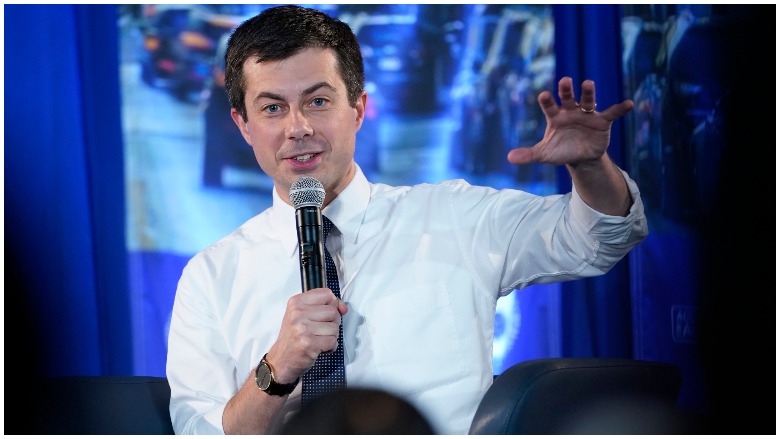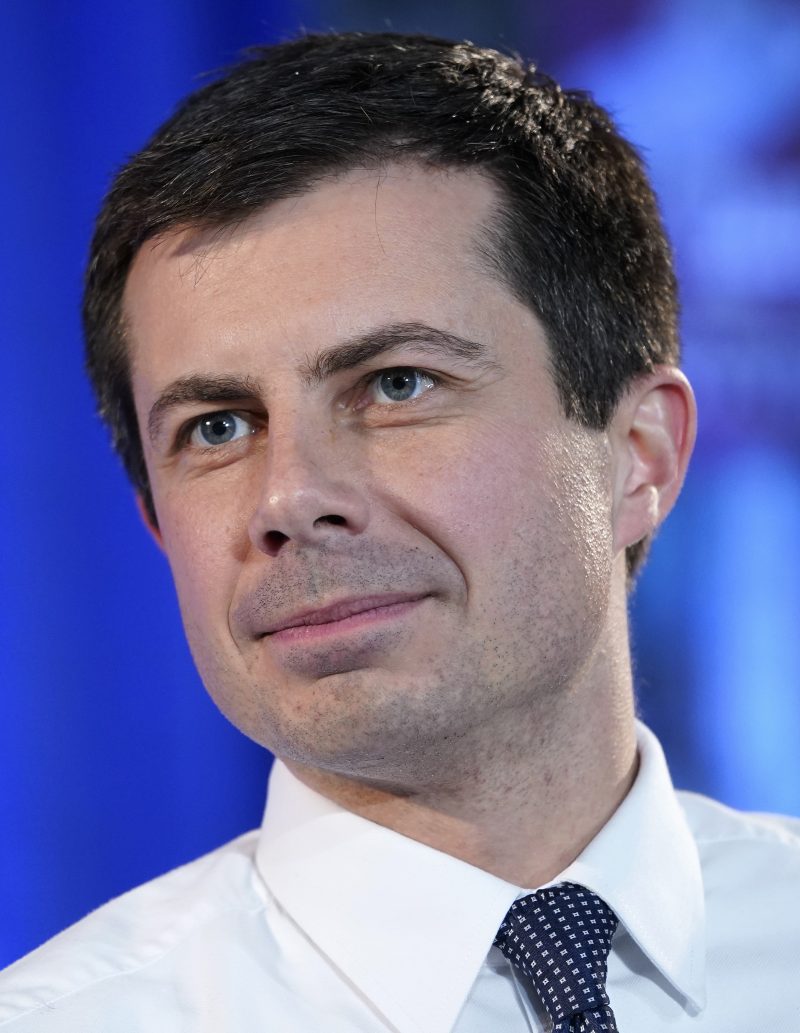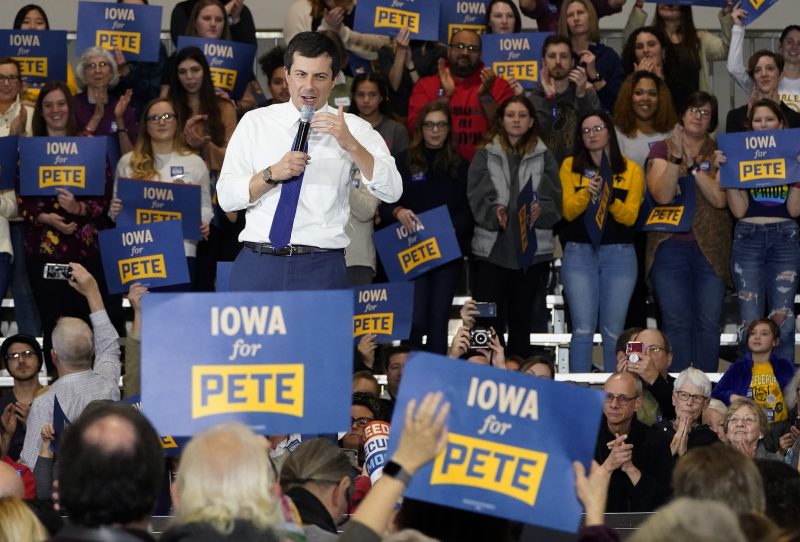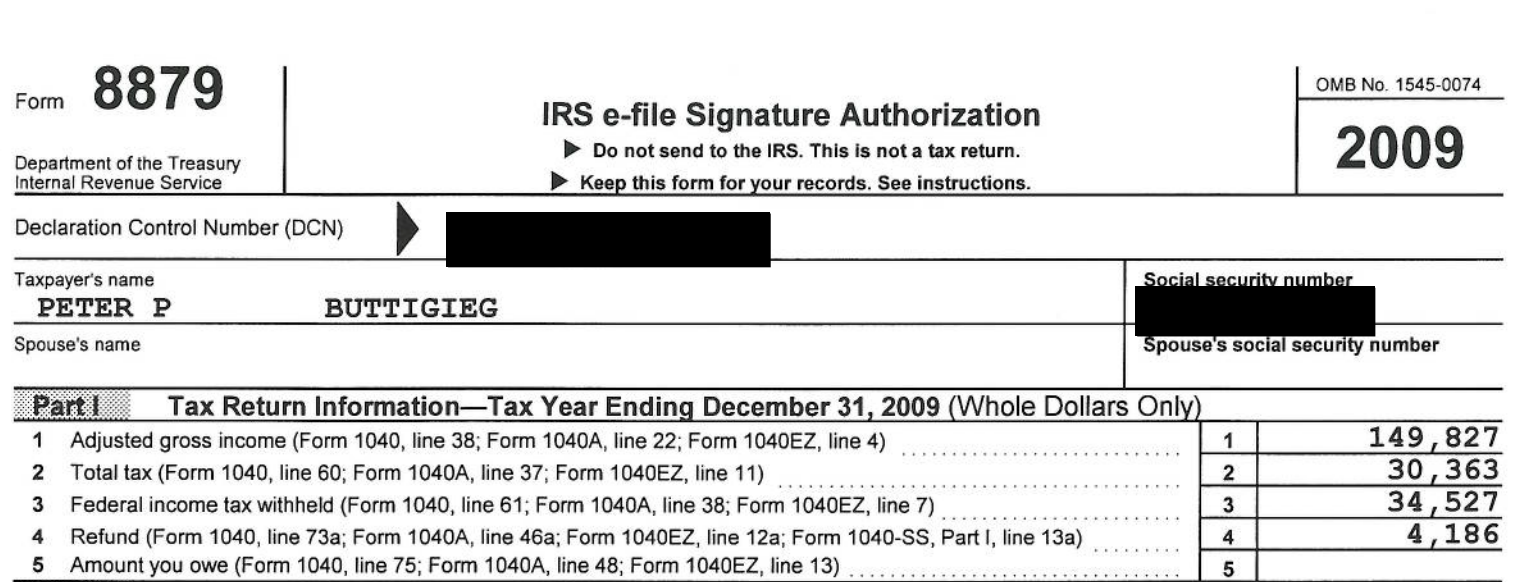
Pete Buttigieg has faced many questions over the work he did in the private sector before he became the mayor of South Bend, Indiana. The Democratic presidential candidate worked for the consulting firm McKinsey & Company from 2007 until 2010.
Buttigieg has released the names of the clients he worked for at McKinsey. He had asked the firm to release him from a non-disclosure agreement, in order to allow him to be more transparent about the exact work he did.
The topic may come up during tonight’s primary debate, which begins at 8 p.m. ET on PBS. Buttigieg will be on stage with former Vice President Joe Biden, Senator Bernie Sanders, Senator Elizabeth Warren, Senator Amy Klobuchar, entrepreneur Andrew Yang and businessman Tom Steyer.
Here’s a recap of what we know about Buttigieg’s time at McKinsey.
1. Buttigieg Said He Accepted a Job at McKinsey Because He Wanted to Learn How the Private Sector Really Worked

GettyPete Buttigieg
Buttigieg did not set out to pursue a career in the business world. In his memoir, Shortest Way Home, he discussed attending an informational session about McKinsey & Company while he was a graduate student at Oxford.
Buttigieg explained that he felt that in order to be more effective in a future career in public service, it would be beneficial to understand how the private sector worked as well. Buttigieg noted that as a student, he debated “profound” questions with classmates, such as how to define “freedom.” But his formal education did not include hands-on experience about how to apply this type of thinking to real-world situations.
To some, McKinsey is the pinnacle of smart and useful analysis in the business world. To others, it is the primary symbol of a trend that sees more and more graduates from prestigious programs go into the private sector when they could be committing themselves to public service, research, or some other worthy pursuit… My education to date, and my hopes of making an impact in the world, pointed to public service, inquiry, and the arts, not business. But I also knew that I would have to understand business if I wanted to make myself useful in practice. Despite all my education, I felt ignorant about how the private sector really worked. I would leave Oxford with a degree in economics, but knew little firsthand about the functions — from logistics to finance — that made the private sector operate. And the firm known best for its expertise on how the private sector works was actually willing to give me an interview for a post-MBA job, taking a chance on the idea that if I was prepared to learn, they could teach me all the things about business I didn’t know.
2. Buttigieg Worked With 9 Clients Over Less Than 3 Years at McKinsey

GettyPete Buttigieg
Buttigieg worked with a series of clients during his nearly three years at McKinsey & Company. He has explained that it was typical for team members to spend several months on a certain project before being switched to something else. In his memoir, he discussed analyzing massive volumes of data, particularly during a project about grocery store prices.
On December 10, 2019, amid pressure from his fellow presidential candidates, Buttigieg released the names of the clients. They included:
- Blue Cross Blue Shield of Michigan
- Best Buy
- The Natural Resources Defense Council
- The Environmental Protection Agency
- The United States Department of Energy
- The United States Postal Service
- The United States Department of Defense
- The Energy Foundation
- Loblaws, a Canadian supermarket chain
3. Buttigieg Has Faced Scrutiny Over What Role He May Have Played in Blue Cross Blue Shield’s Decision to Enact Large-Scale Layoffs
Buttigieg has had to answer questions particularly about the work he did for health insurance provider Blue Cross Blue Shield of Michigan. Buttigieg has said that Blue Cross Blue Shield was the first client he was assigned to at McKinsey and that he stayed on the project for three months. He briefly explained in a written statement that his work at that time included “performing analytical work as part of a team identifying savings in administration and overhead costs.”
This raises a red flag among his critics because, in early 2009, Blue Cross Blue Shield announced that it was raising rates and laying off about 10 percent of its employees. The insurance provider also froze pay for non-union workers and significantly reduced spending.
More recently, Buttigieg has insisted that these decisions were made long after he had been taken off the project. In an interview with the Atlantic, he stressed that he had not been heavily involved with anything of real substance because he was still in training at the time. Buttigieg said that he remembers looking at data points that included costs related to rent, mail and travel costs, but that his analysis was not related to the cost of premiums or specific health care policies.
But when he was running for mayor of South Bend in 2011, Buttigieg appeared to reference his past experience with the Blue Cross Blue Shield project. During a forum in April of 2011, Buttigieg explained that his prior work experience included figuring out how to rework a budget. He said that he worked with “one client organization that was a large insurance firm that had grown in such a way that there was a great deal of duplication and some people didn’t even know what the people working for them were doing.”
4. Buttigieg Released His Tax Returns From His Years at McKinsey

Pete Buttigieg 2009 tax return
Buttigieg previously released 10 years worth of tax returns onto his campaign website. In late November of 2019, he also made his tax returns from 2007 and 2008 public, in order to show his earnings from his entire time in the private sector.
Buttigieg’s gross income for 2007 was $80,397. The return shows that he paid $13,954 in taxes.
In 2008, he earned $122,680 and paid $25,776 in taxes. He received a federal refund of $1,273.
In 2009, Buttigieg earned $149,877 in gross income. He paid $34,527 in federal taxes and received a refund of $4,186.
Buttigieg earned less than that until 2017. That year, he reported earnings of $133,556, the majority of which came from his salary as mayor of South Bend. Buttigieg then reported earnings of $152,643 in 2018. But he and husband Chasten Glezman Buttigieg likely have put much of that income toward paying their student debt, which is estimated be above $140,000. Read more about his net worth here.
5. Buttigieg Is Still Barred From Discussing Proprietary Information Related to His McKinsey Clients
Buttigieg has been granted the ability to discuss his specific clients at McKinsey, but he still has to be careful about what he discloses. On December 9, 2019, McKinsey released a statement announcing that it was releasing Buttigieg from his non-disclosure agreement. But there are still limits.
The statement read, “We recognize the unique circumstances presented by a presidential campaign. After receiving permission from the relevant clients, we have informed Mr. Buttigieg that he may disclose the identity of the clients he served while at McKinsey from 2007 to 2010. Any description of his work for those clients still must not disclose confidential, proprietary or classified information obtained during the course of that work, or violate any security clearance.”
READ NEXT: Pete Buttigieg’s Husband, Chasten, Was Homeless After Coming Out